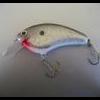I use Superlube grease, TG's Yellow Rocket Fuel, and Shimano Ace-2 drag grease on drag washers. There are several good bearing oils available including Reel Butter Bearing oil (not the regular oil, which is thicker). Quantum Hot Sauce has good lube characteristics if you can stand the ugly red stain getting all over the inside of the reel (I can't).
Superlube comes in small squeeze tubes for about $2, or you can buy an 8 oz can (a lifetime supply!) of the stuff for less than $10 at a Napa auto store. It's an automotive bearing grease but is used by many reel service centers and works great. It contains PTFE and is white in color. Any grease will work - this stuff just works and lasts best, in my experience.
Drag grease - don't grease drag washers with regular grease because they will become jerky pretty quickly. Drag grease is much thicker stuff, most often based on cosmoline, a thick, sticky grease. Penn Muscle Grease, Shimano Ace-2, Cal's, etc are designed for drags and work well.
TG Rocket Fuel comes in 3 different viscosities. Yellow is the one you want. There's a tradeoff on bearing oils. The lower the viscosity, the easier a bearing will spin but the faster the oil will migrate out of it. The YRF will last 4-6 months in typical use before the 2 spool bearings will need another drop.





